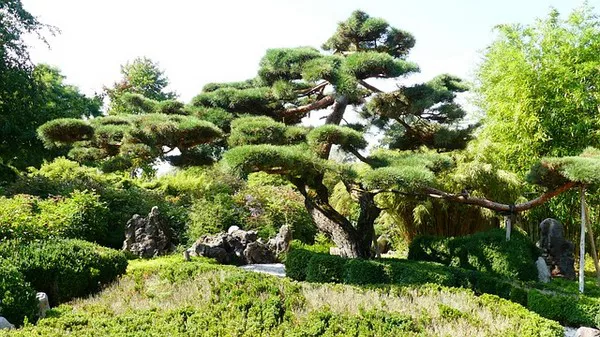Bonsai, the ancient art of cultivating miniature trees, has captivated enthusiasts for centuries. With its origins tracing back to China and Japan, bonsai has evolved into a global phenomenon, attracting hobbyists and experts alike. Central to the beauty and success of bonsai is the selection of the right tree species. While virtually any tree can be trained into a bonsai form, certain species are better suited for this intricate art form than others. In this comprehensive guide, we delve into the characteristics of various tree species to help you choose the perfect specimens for your bonsai endeavors.
Understanding Bonsai Species: A Brief Overview
Before delving into specific tree species, it’s crucial to understand the fundamental principles of bonsai cultivation. Bonsai, which translates to “tray planting” in Japanese, involves cultivating small trees in containers and shaping them to mimic the appearance of full-sized trees. This process requires careful attention to detail, as well as an understanding of the unique characteristics and growth habits of each species.
When selecting trees for bonsai, it’s essential to consider factors such as the tree’s growth rate, leaf size, bark texture, and overall aesthetic appeal. Additionally, certain species are more forgiving of pruning and training techniques, making them ideal choices for beginners.
Popular Bonsai Species: A Closer Look
1. Japanese Maple (Acer palmatum): Renowned for its vibrant foliage and graceful form, the Japanese maple is a favorite among bonsai enthusiasts. Its delicate leaves and branching structure lend themselves well to the miniature scale of bonsai. Japanese maples are also relatively slow-growing, allowing for precise pruning and shaping over time.
2. Chinese Elm (Ulmus parvifolia): The Chinese elm is prized for its resilience and adaptability, making it an excellent choice for beginners. This species is known for its small, serrated leaves and distinctive bark texture, which develop attractive fissures with age. Chinese elms tolerate a wide range of growing conditions and respond well to pruning, making them versatile candidates for bonsai cultivation.
3. Juniper (Juniperus spp.): Junipers are a diverse genus of trees and shrubs known for their rugged appearance and evergreen foliage. Varieties such as the Japanese juniper (Juniperus procumbens) and the Chinese juniper (Juniperus chinensis) are popular choices for bonsai due to their compact growth habits and ability to withstand frequent pruning. Junipers are well-suited to traditional bonsai styles such as cascade and windswept.
4. Ficus (Ficus spp.): Ficus trees, including species such as Ficus retusa and Ficus microcarpa, are favored for bonsai due to their tolerance of indoor conditions and rapid growth rate. Ficus bonsai exhibit glossy, dark-green leaves and develop aerial roots over time, adding to their visual appeal. These trees respond well to frequent pruning and can be shaped into a variety of bonsai styles, including informal upright and banyan.
5. Pine (Pinus spp.): Pines are iconic trees in the world of bonsai, prized for their rugged appearance and characteristic needle-like foliage. Species such as the Japanese black pine (Pinus thunbergii) and Scots pine (Pinus sylvestris) are popular choices for bonsai due to their compact growth habits and ability to develop dense, ramified foliage pads. Pines require careful management of their apical buds and candle pruning to maintain their desired shape.
6. Trident Maple (Acer buergerianum): The trident maple is a versatile species well-suited to bonsai cultivation, thanks to its small, three-lobed leaves and attractive bark texture. Native to East Asia, this species exhibits vibrant fall foliage and responds well to pruning and wiring techniques. Trident maples thrive in temperate climates and can be trained into a variety of bonsai styles, including formal upright and broom.
7. Boxwood (Buxus spp.): Boxwoods are popular choices for bonsai due to their dense foliage and ability to withstand frequent pruning. Varieties such as the common boxwood (Buxus sempervirens) and Japanese boxwood (Buxus microphylla) are prized for their small, glossy leaves and compact growth habits. Boxwood bonsai are often styled in traditional forms such as formal upright and slanting, showcasing their refined appearance.
Conclusion
Selecting the right tree species is a critical step in the journey of bonsai cultivation. By understanding the unique characteristics and growth habits of each species, enthusiasts can create stunning bonsai specimens that capture the essence of nature in miniature form. Whether you’re drawn to the delicate foliage of Japanese maples or the rugged beauty of junipers, there’s a bonsai species to suit every taste and skill level. With patience, dedication, and a keen eye for detail, you can embark on a rewarding bonsai journey that lasts a lifetime.


